
Get a clear estimate for carpet repair cost. Learn what impacts pricing, compare repair types, and find ways to save on your next carpet project.
Whether you want your carpet to blend in or stand out, you’ve got options


Hire a local carpet installer to identify the best carpet color for your unique space, style, and lifestyle needs.
Off-white shades are ideal if you hope to make a room appear bigger, but show dirt more easily.
Dark colors like black or burgundy are a good option if you want cozy vibes (or to hide stains), but can make a room feel smaller.
Light and medium browns make sense for a neutral, versatile look that allows your decor to steal the show.
Color is just one factor to consider when shopping for new carpet, but it has a surprisingly big impact on the look and feel of your space. On the one hand, a lighter carpet color can make your home feel bright and airy, but then again, darker tones are more forgiving of spills and stains. If you aren’t sure how to choose a carpet color for your home, here are five popular options.
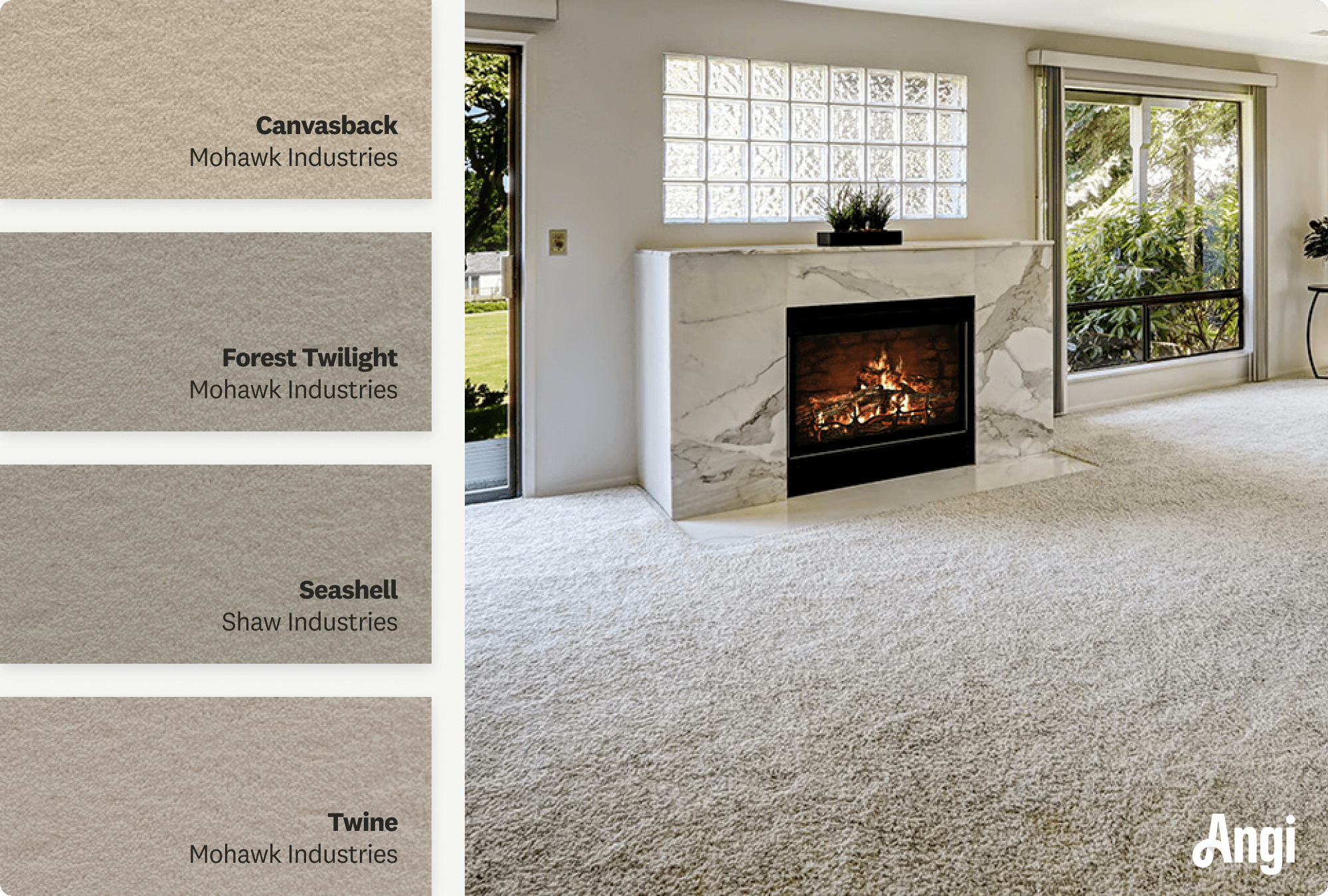
Light-colored carpets in off-white shades (like cream, ivory, or eggshell) instantly add a touch of luxury to any room. These hues also pair well with other neutrals or bold colors, so they should complement your existing decor and furniture. However, there is one major caveat: If you have young children or pets, off-white carpet won’t be a good choice for your home since it shows dirt and spills easier than darker colors.
| Pros | Cons |
|---|---|
| Elegant look | High maintenance |
| Matches most decor | Not ideal for families |
| Can make a room feel light and airy | Some shades may feel too bright |
Best for: Anyone hoping to open up their space and make it seem bigger.
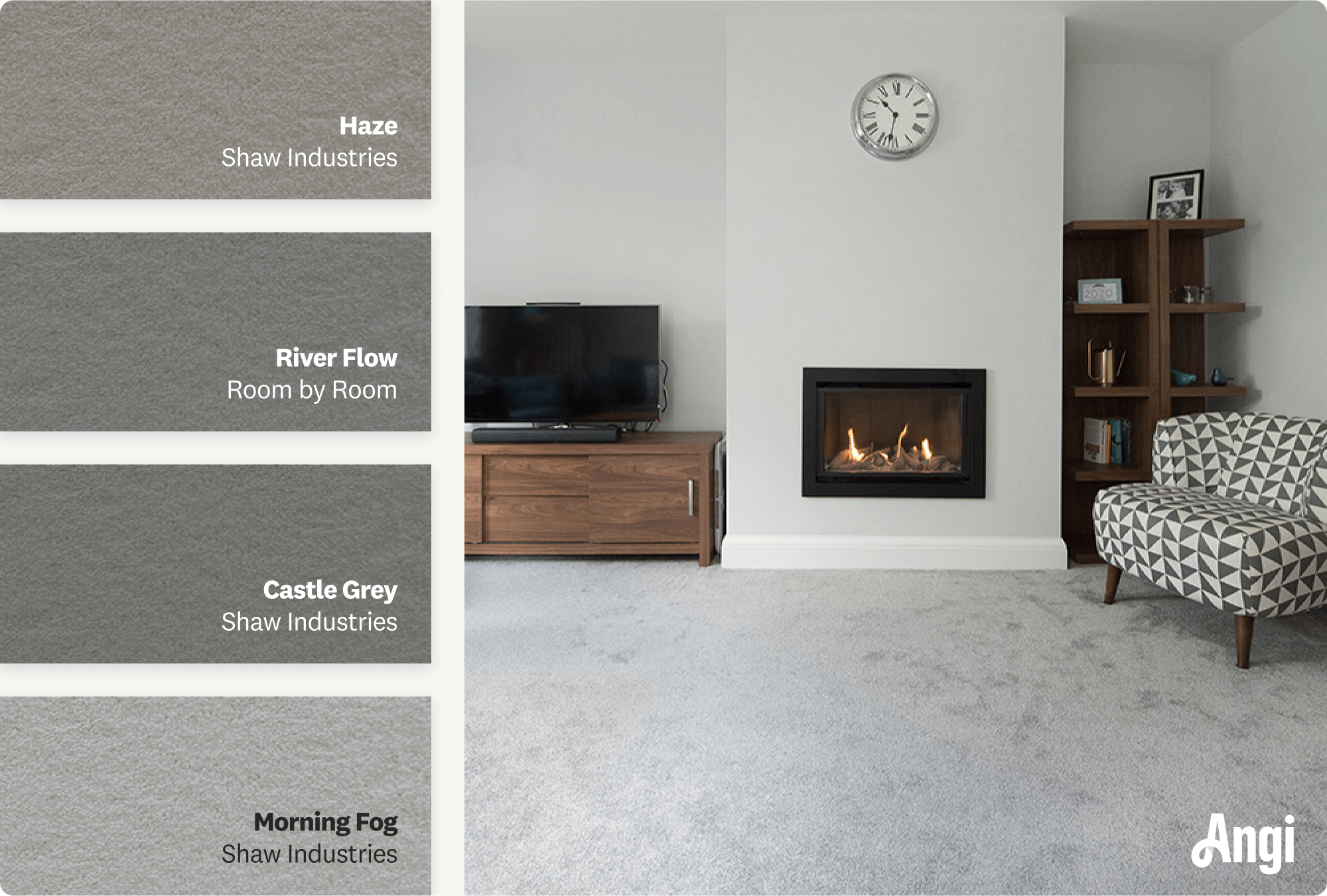
There are a couple of factors that make gray a great carpet color choice for any home. For starters, it comes in a range of shades—from silver to greige to charcoal—that work well with all kinds of home decor styles. Lighter tones will add a hint of sophistication to your room, while deeper hues will conceal stains and dirt better.
| Pros | Cons |
|---|---|
| Variety of tones | Lighter shades show spills |
| Won’t clash with other colors | Some might find it boring |
| Versatile | Not the coziest color |
Best for: People who enjoy a modern or minimalist aesthetic.
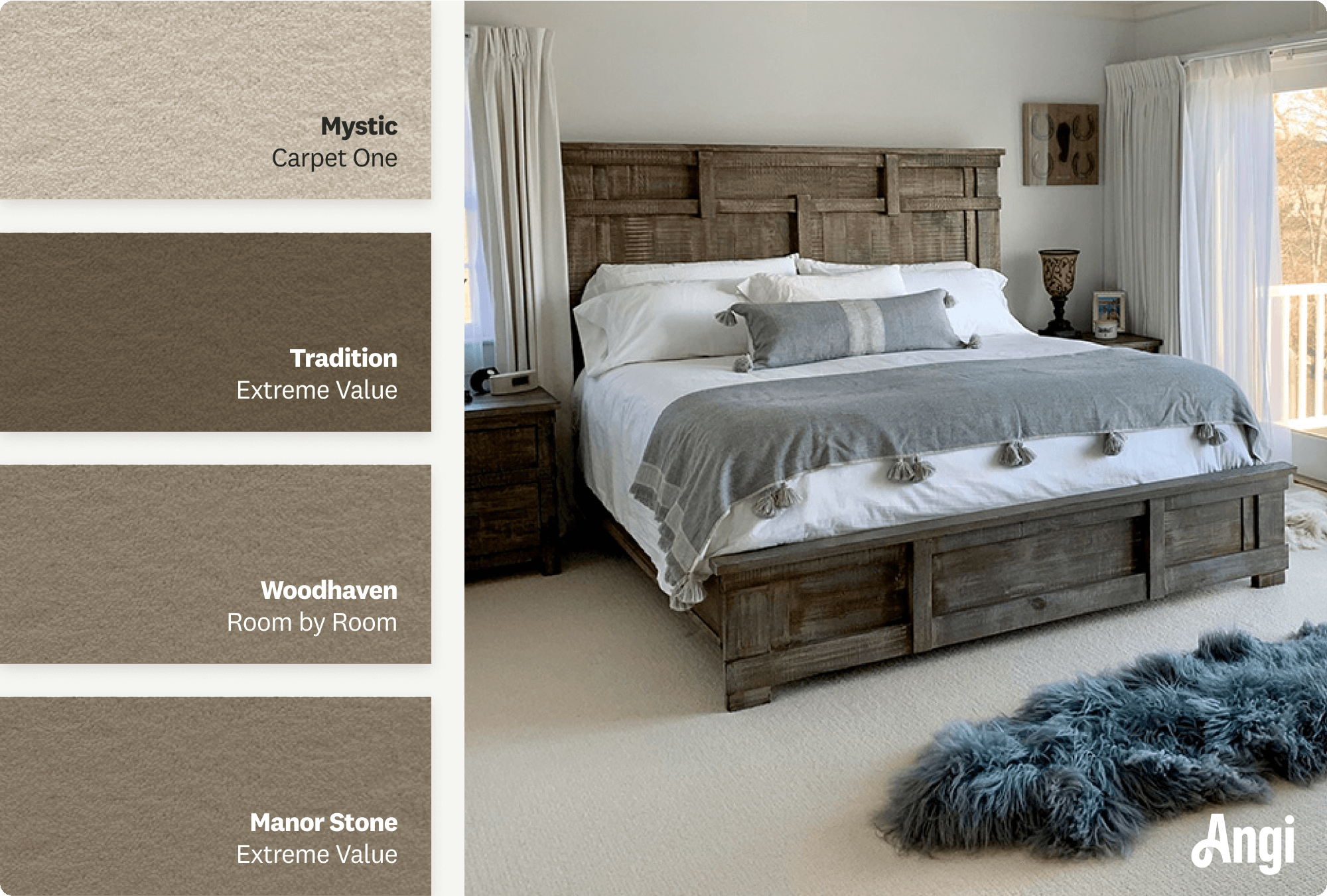
This range of hues includes colors like tan, beige, camel, and khaki—neutral earth tones that pair beautifully with neutral-colored walls and occasional pops of color. Medium shades of brown can hide small stains and pet hair fairly well, so those colors may be worth considering if you have kids or furry friends running around your home.
| Pros | Cons |
|---|---|
| Can work with warm or cool colors | Could be too bland for some |
| Some shades hide dirt well | Lighter tones may show stains |
| Shouldn’t put off potential buyers if you sell | Deep shades can make rooms feel smaller |
Best for: Folks who want a neutral carpet that doesn’t distract from their decor.
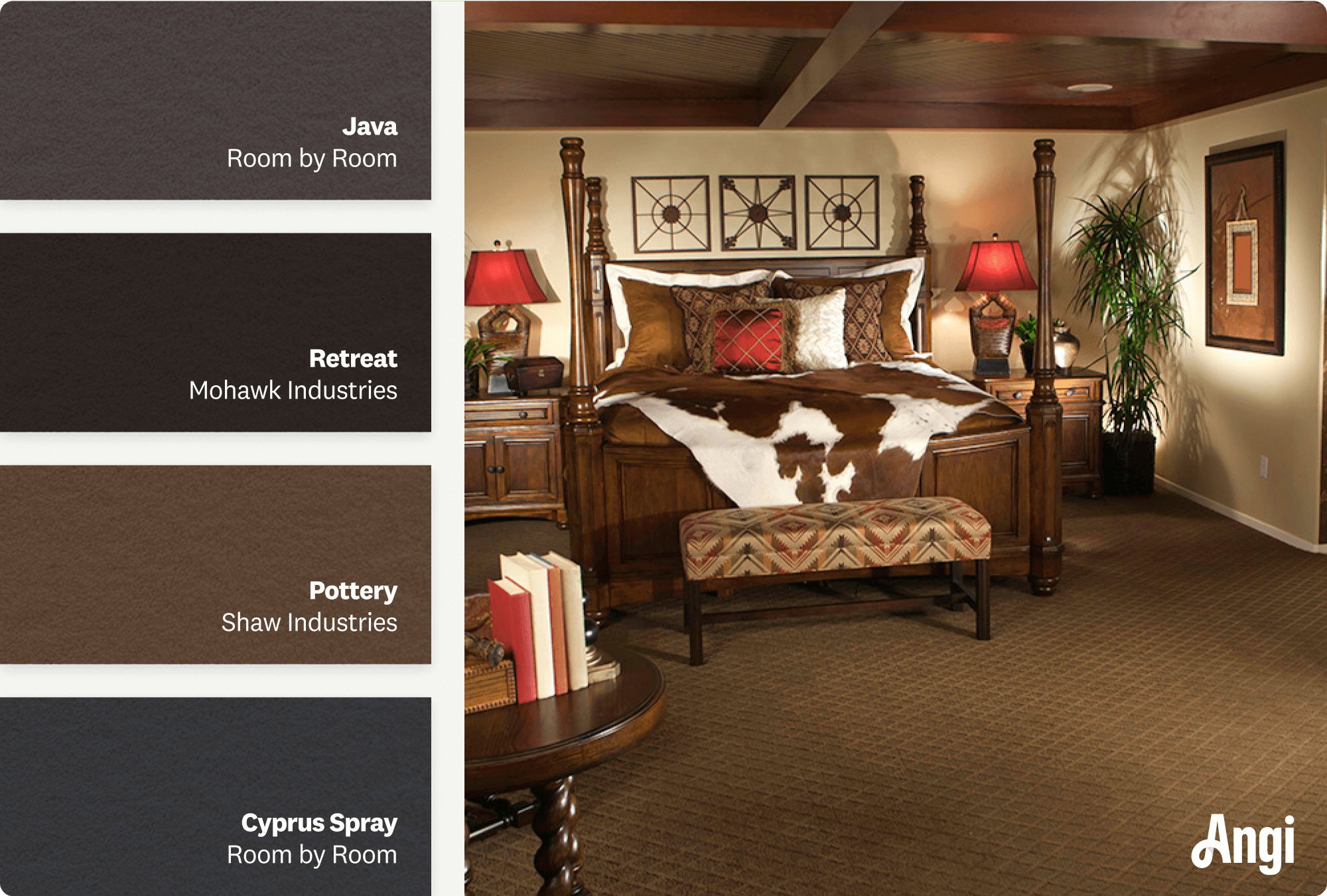
Dark tones like chocolate brown, burgundy, or black might not be the first things that come to mind when you think about living room or bedroom carpet colors. However, if you’re aiming for a warm and cozy vibe, these deep shades can help you achieve that. Keep in mind, though, that dark carpets may make a room feel smaller and increase the visibility of certain types of debris (like lint and light-colored pet hair).
| Pros | Cons |
|---|---|
| Conceals dirt, mud, and stains | Makes some debris more visible |
| Makes a bold statement | Can make spaces feel smaller |
| Creates a cozy atmosphere | Stain removal may cause color fading |
Best for: Individuals interested in making their home feel more snug and cozy.

While many people seek out neutral flooring that meshes well with any kind of decor or color scheme, that’s not the case for everyone. If you’d prefer something that stands out a bit more (perhaps you’re striving for a maximalist aesthetic), you can find carpet in vibrant shades like green, blue, pink, and more. Just be mindful that these bold hues won’t appeal to everyone. If you sell your home, your colorful carpet might rub potential buyers the wrong way.
| Pros | Cons |
|---|---|
| Statement-making design choice | Can overpower the room |
| Can work well in kids’ rooms | Might clash with existing decor |
| Adds personality and uniqueness | May impact resale value |
Best for: Risk takers who want to infuse bright colors into their home.
While it’s possible to install carpet on your own, there are a few reasons why it’s not a good idea. For one, this job requires specialized tools and supplies—and that’s not to mention the skills and experience needed to use them properly. Plus, some carpet manufacturers will void your warranty if you install their products without a professional. For these reasons, we recommend hiring a local carpet installer to perform the job correctly.
The price of adding carpet to your home depends on the size of your space and the carpet material. The amount of prep work required (for example, removing old carpet or repairing the subfloor) will also impact your project price. On average, though, installing carpet costs between $800 and $2,800, with most people paying about $1,800.
From average costs to expert advice, get all the answers you need to get your job done.

Get a clear estimate for carpet repair cost. Learn what impacts pricing, compare repair types, and find ways to save on your next carpet project.

Carpet padding makes your carpet feel extra comfortable and protects your floors from damage, but how much does carpet padding cost? Let’s look at the numbers.

The cost to carpet stairs depends on the number of stairs, material choice, and staircase type. Read on to calculate your project expenses

Frieze carpet is a trendy option, but is it right for your home? Consider these pros and cons of frieze carpet to help you decide.
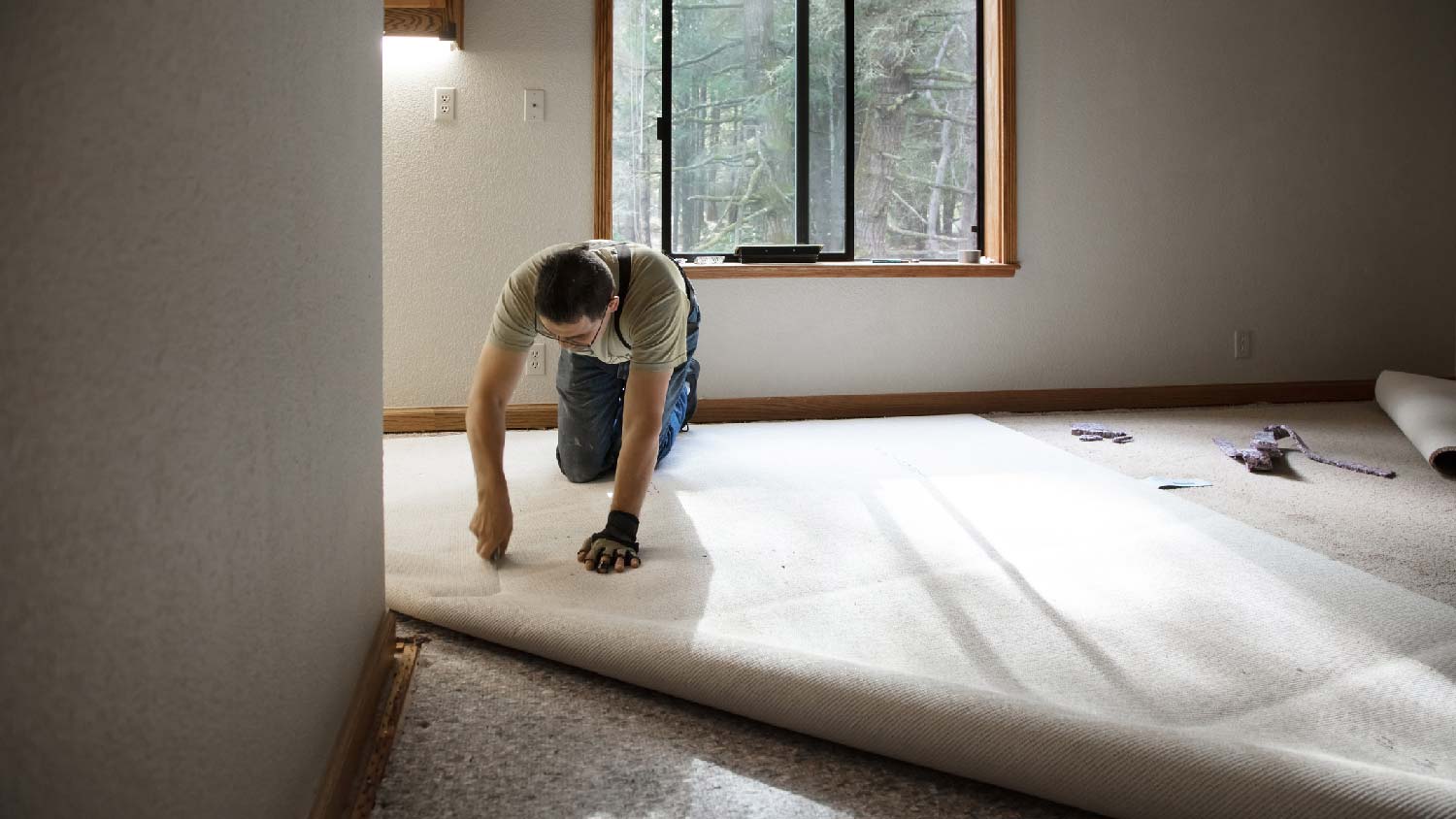
Carpet padding helps the carpet last longer and makes it more comfortable, among other benefits. If you’re wondering whether you need carpet padding, we have answers.

Your carpet’s pile type impacts comfort, price, and ease of cleaning. Learn about low-pile versus high-pile carpet and when to choose each.